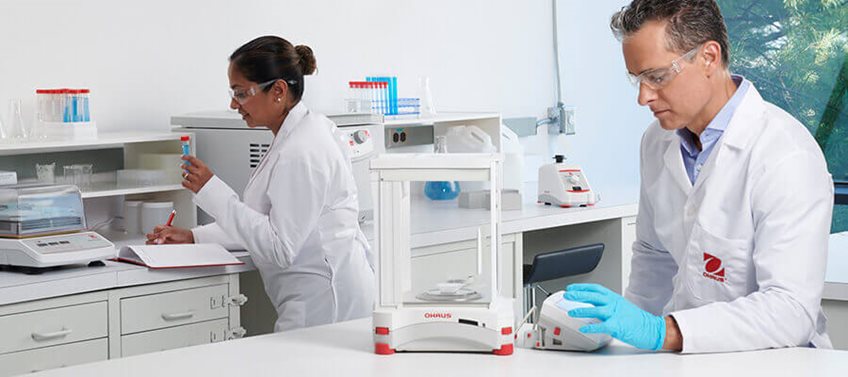
Table of Contents
Introduction
What are the Capacities of the Semi-Micro Analytical Balances?
How do Analytical Balances Differ?
What is the Capacity of a Precision Balance?
What is the right choice for my lab?
Contact Us
The precision measurement of mass is at the core of nearly all modern science. The discovery that the elements of carbon, hydrogen, and oxygen, along with nitrogen, phosphorus and assorted other elements account for most of living matter, provided the understanding that weight was related to the individual elements - it was then that Analytical Balances were created, in 1892.
Today, the Analytical Balances are the most important tool in every laboratory for use in managing the tiniest of samples, that require the highest precision of accuracy because it has a higher readability measuring to the nearest 0.01 µg. Analytical balances are available with varied capacities and readability, enabling each lab to choose the capacity that best suits their measurement needs. OHAUS provides four series;
Explorer,
Adventurer,
Pioneer, and
PR; each offers performance variance readability, such as semi-micro, analytical, and precision.
When laboratory work and research, requires accuracy to the hundred-thousandth, a semi-micro balance is required for specific, accurate weighing results.
Semi-micro balances are required for weighing powders, drugs and chemicals in smaller increments than analytical balances. The
OHAUS Semi-Micro Balances have been designed with a maximum capacity of 220g; and readability of 0.01 mg; 0.1 mg. This balance is used for uses ranging from weighing, percent weighing, parts counting, to dynamic weighing, filling, totalization formulation, and more.
These types of balances are used primarily in chemistry, pharmaceutical, and R&D applications. Analytical balances are highly sensitive lab instruments designed to accurately measure mass, with a readability range between 0.1 mg - 0.01 mg. An analytical balance is so sensitive that air currents can affect the measurement, so they have been designed with a draftshield or weighing chamber to prevent small samples from being affected by air flow, which could result in inaccurate readings.
OHAUS Analytical Balances range in maximum capacity from 52 g to 320 g; thus, accommodating a significantly higher maximum capacity that a Semi-Micro Analytical Balance. Consistent calibration and monitoring are required for semi-micro and analytical balances.
Precision balances are also referred to as top-loading balances, are considered semi-analytical as they are less accurate than a standard analytical balance. If extreme accuracy isn’t necessary, precision balances work appropriately for measuring mass to an overall accuracy of 0.001 g. An advantage of precision balances is their stability and they are less-sensitive to environmental conditions, providing weight readouts in seconds. OHAUS
Scout and
Navigator have a maximum capacity range of 120 g to 22 kg.
Analytical balances are high precision instruments and should be operated carefully, avoiding shock, movement, and other environmental disruptions. It is important to choose a balance that meets the lab’s accuracy tolerance requirement, in relation to the matter sample sizes. Consider the importance of the lab work being conducted, and choose the analytical balance that will provide optimal performance for your lab’s unique requirements.
Request a Quote:
OHAUS Precision Balances
Request a Quote:
OHAUS Analytical Balances
Request a Quote:
OHAUS Semi-Micro Balances